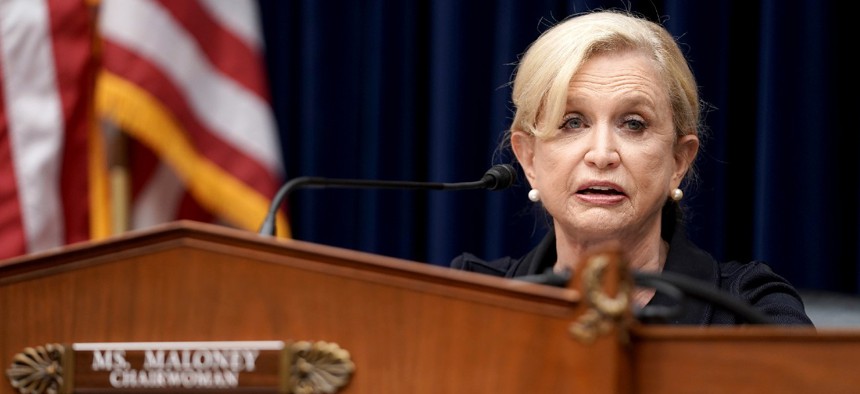Watchdog Considers Review of Equal Employment Opportunity Complaint Process for Feds
House Democrats sent a request to the Government Accountability Office last week.
A watchdog is considering a request from Democratic lawmakers to look at how the Equal Employment Opportunity complaint process and anti-harassment programs for federal employees could possibly be reformed.
Unlike the EEO process in other sectors, federal employees must first file complaints in their own agencies 45 days after an incident. If the matter isn’t resolved through mediation or counseling, the complainant can file a formal complaint and then agencies can either deny it or launch an investigation. If there is an investigation, employees may accept the findings or request a hearing before the Equal Employment Opportunity Commission. This is “unduly complex for victims,” said an April 2020 report from the U.S. Commission on Civil Rights.
“As the largest employer in the United States, the federal government should serve as a model employer by processing complaints fairly and expeditiously, holding perpetrators accountable, and providing victims with relief,” wrote Reps. Carolyn Maloney, D-NY., chairwoman of the House Oversight and Reform Committee, and Jackie Speier, D-Calif., co-chair of the Democratic Women’s Caucus, in a letter to the Government Accountability Office on September 22. “The federal government is only as good as its civil servants, all of whom deserve to do their jobs in safety and with dignity. Unfortunately, too often federal employees are casualties of a process that can be convoluted, slow, costly and unjust.”
They cited an August 2009 report from GAO that identified problems in the EEO process for the federal sector, which included lack of accountability for agency EEO officials who don’t follow correct protocol, inadequate resources for the EEOC and agency EEO offices, and possible conflicts of interest in agencies doing their own investigations. “Our offices continue to receive complaints that mirror the issues raised in the 2009 report,” wrote Maloney and Speier.
They added that the April 2020 report, titled “Federal #MeToo: Examining Sexual Harassment in Government Workplaces,” confirmed many of their concerns as well as “highlighted the importance of agency anti-harassment programs,” many of which are ineffective, according to the U.S. Commission on Civil Rights. The EEOC considers harassment to be a form of discrimination in violation of Title VII of the 1964 Civil Rights Act, the 1967 Age Discrimination in Employment Act and the 1990 Americans with Disabilities Act.
Maloney and Speier would like GAO’s study to look at: agencies’ anti-harassment programs; whether or not EEOC needs more authorities or resources to enforce its regulations; any personnel changes to help the federal EEO process (such as giving EEOC administrative judges subpoena authority); challenges that get in the way of “prompt, fair and impartial” processing of EEOC federal complaints; barriers victims face in substantiating their complaints; possible changes to agencies’ internal process for investigating complaints and holding those who committed harassment accountable; and the frequency of agencies’ disciplinary actions and if the punishments are consistent with the offense.
They would also like GAO to review “whether the federal government’s EEO process would benefit from eliminating the requirement that employees exhaust agency administrative processes before filing complaints with EEOC or in district court.”
Maloney and Speier suggested GAO speak with EEOC practitioners, current and former complainants, civil rights groups, federal employee unions and inspectors general that have reviewed EEOC programs.
GAO told Government Executive on Monday it received the request and it is going through the standard review process.








